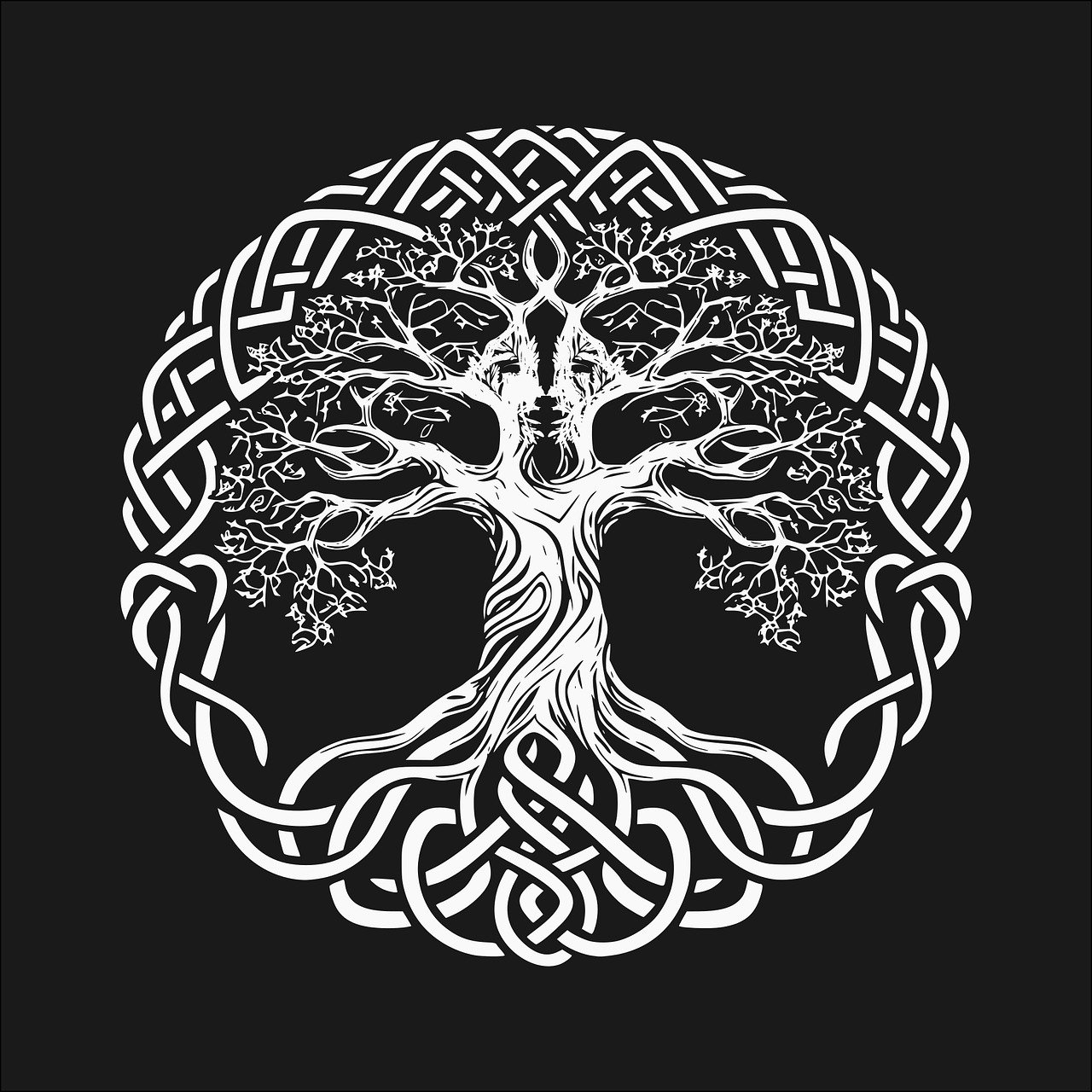Yggdrasil – The Sacred Tree Of Life In The Norse Mythology
Yggdrasil is the name of the sacred ash tree of life in the Norse mythology, the mythology of the Norse (otherwise commonly known as Vikings which was the title of what would nowadays be a profession or an occupation and not an ethnic label), one of the Germanic peoples of the Early Middle Ages native to Scandinavia and their overseas colonies in the Faroe Islands, Iceland, Greenland as well as the British Isles, namely in Scotland (for example in Jarlshof in the Shetland Islands), Isle of Man, Ireland, and Anglo-Saxon England (additionally, for a relatively brief period of time, namely during the early 11th century, the Norse also settled in what they called Vinland in present-day Newfoundland, Canada, North America). During the Viking Age, the Norse also formed and existed in hybrid cultures in Europe (particularly in Northwestern Europe), such as those of the Gaels in some of the Celtic-speaking lands of the British archipelago (i.e. Ireland, Isle of Man, and Scotland), i.e. the Norse-Gaels, but also of the Normans in Normandy, northern France (a region whose name stems from the Norse or Northmen).

Image source: www.pixabay.com
Being the sacred tree (or cosmic tree) of life in the Norse mythology, Yggdrasil connects the 9 realms from the cosmology of the Norse, standing in the centre of the universe or of creation. These 9 realms (or dimensions if you will), referred to as Níu Heimar in Old Norse, are: Asgard/Ásgarðr (the domain of the Æsir gods ruled by Odin, the god of wisdom, knowledge, poetry, death, and magic), Vanaheimr (the home of the Vanir gods), AlfheimÁlfheimr (the home of the light elves and, in some sources, the domain of the Norse god Freyr), Midgard/Miðgarðr (the realm of mankind, i.e. our Earth), Jötunheimr (the realm of the jötnar, supernatural beings related to the Norse gods, at times inaccurately described as ‘giants’), Muspelheim/Múspellsheimr (the domain of the fire giants, a dimension of fire), Svartálfheim/Svartálfaheimr (the realm of the dark elves), Niflheim/Niflheimr (one of the primordial worlds, a dimension of mist from which all rivers can trace their origins, but also the realm of Loki’s daughter Hel and a dimension of the Norse afterlife for people who did not die heroically in a battle or in an otherwise notable manner), and possibly also Nidavellir/Niðavellir (the realm of the dwarves).
After Ragnarök will occur (i.e. the Norse apocalypse), Yggdrasil is thought to have a renewal nature for the world in that humanity will be reborn from it, with the first two new humans being known as Líf (i.e. life) and Lífþrasir (i.e. lover of life and the lover of Líf). At the bottom of Yggdrasil stands a sacred well (or spring) known as Urðarbrunnr which is associated with a trio of Norns consisting of Urðr, Verðandi, and Skuld. The Norns are supernatural beings in the Norse mythology who weave the destinies of both mortals and gods. They represent the past, present, and, ultimately, future, in this particular order as well as the interconnection between the three aforementioned stages of time making up life as we know it in chronological regards (i.e. in linear time).
Documentation sources and external links:
- Líf and Lífþrasir on www.wikipedia.org (in English)
- Norse cosmology on www.wikipedia.org (in English)
- Weavers of Destiny: The Norns in Norse mythology on www.paganheim.com
- Yggdrasill on www.britannica.com (the online version of Encyclopædia Britannica)
- Aesir on www.britannica.com (the online version of Encyclopædia Britannica)

